Text
We want to hear from you, Fellowship! 🌸
51 notes
·
View notes
Text
I actually don’t mind that “dead dove” has become conversational shorthand for “fics with heavy themes where you REALLY need to pay attention to the warnings”. such is the nature of language. what i do mind is when people tag their actual fics with dead dove and then give no indication of what they’re actually warning about. that is useless. that helps no one. that is completely against the spirit of the meme. i will not be reading that
34K notes
·
View notes
Text
Gandalf: What’s up guys? I’m back.
Aragorn: What the- you can’t be here. You’re dead. I literally saw you die.
Gandalf: Death is a social construct.
487 notes
·
View notes
Text
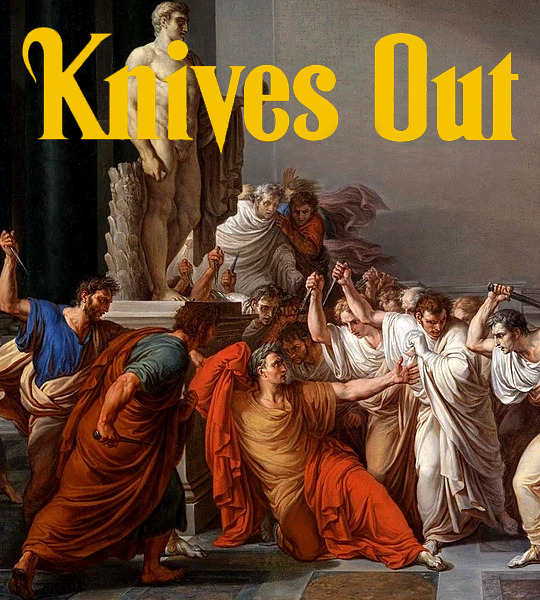
merry ides of march
92K notes
·
View notes
Note
hi freya! your work with the TLB series is phenomenal and truly a gift to my life! do you have any advice for first time book planning/outlining, specifically in the realm of historical fiction?
oh boy. I rely on two guidelines for my planning process, and they are absolutely NOT historical fiction specific, but you can have them anyway:
make the romance (if there's a central one) more or less follow the romancing the beat structure, which is both simple and very flexible.
a structure-for-dummies version of four act structure, which boils down to deciding early on three key landmarks:
at the 25 % mark, something happens which commits the characters fully to the story, whatever that is.
at the 50% mark, something major happens which twists the direction and shape of the story - new key information is revealed, the second body is found, first sex scene, whatever.
at the 75% mark, the story tips towards crisis/disaster/the lowest emotional point.
...then I try to sketch out a dot point list of a roughly equal number of scenes to take place on either side of each of these (these are the four acts). this is how I make pacing work as early as the first draft, when I have very little innate sense of pacing and I detest doing structural edits.
ALSO: start as late as possible in the story (have the main inciting incident take place within the first scene) and finish as early as possible (diana wynne jones is particularly excellent at this; I will sometimes bend this rule if an epilogue is expected, but my PERSONAL opinion is that for the most part You Don't Need That Epilogue).
this may be helpful for you, or it may be no help at all. most writers discover what balance of planning/not planning works for them via trial and error. good luck!
172 notes
·
View notes
Text
some important calvin and hobbes facts in case you haven't read the original comic strip in a long time or only absorbed stuff on it from memes and out of context bits on here:
Calvin's last name has never been given, and neither has any of his parent's names. This was actually why his uncle Max only showed up for a brief storyline; the creator of the comic, Bill Watterson, ultimately felt that while it was fine to have him as someone for his parents to talk to, it felt far too awkward to never have Max refer to them by name and he never made a return appearance.
The general tone of the comic is fairly light-hearted, with a big emphasis on goofy slapstick comedy contrasted by clever wordplay and often surprising adult-centered jokes that'll hit you like a slap. A big part of the comedy is, as Watterson put it (paraphrased) "It's really funny to me when people express deeply stupid ideas with really fancy terminology." One notable example you might have seen is that one bit where Calvin asks his mom for money to buy a Satan-worshiping rock album and his mom replies that there's nothing genuine about them and they're just putting on the attitude for shock value, and comisserates with Calvin as he deplores that mainstream nihilism can't be trusted. He concludes that childhood is disillusioning.
There is a LOT of criticism of the extreme materialism and selfish mentality of the late 80s, when the comic was initially written. This may go a long way to explain how its aged so well; much of what it criticizes resonates well with people today.
Bill Watterson views comic strips a legitimate form of artwork, and repeatedly fought to have more space to draw more beautiful and artistic backgrounds, which was a very hard fight and unpopular even with other comic strip artists. He eventually did win some compromises and a lot of Calvin And Hobbes' artwork shows it, with the use of space to indicate time as well as a sharp contrast between the often plain environments of mundane life contrasted by the wildly beautiful imagery of Calvin's imagination (which often sports realistic depictions in an art shift of sorts).
Hobbes is explicitly not an imaginary friend, by word of Watterson himself. We don't know WHAT he is exactly, and Hobbes is apparently unaware of the strange nature of his reality; people look at him and only see an ordinary stuffed tiger plushie, but he has a tangible effect on the world that would be physically impossible for Calvin to do on his own. He's apparently been around for a while, and was apparently around when Calvin was a young baby.
On that note; Hobbes has implicitly killed (notably treated as both a gag and also with the vibe of 'he's a tiger, duh') and while he doesn't do it again on-screen, he doesn't have any moral issues about it. Calvin claims that he's never had trouble bringing Hobbes to school because the last time he did, Hobbes killed and ate a bully named Tommy Chestnut and simply comments that it was gross and he needed a bath. Calvin's tried to repeat this again, but Hobbes was grossed out at the thought having to eat a kid raw and not being allowed to use an oven first, or complaining that children are too fattening.
Hobbes became gradually less human-like in body language and more like an actual cat in both body language and behavior; this was due to Watterson drawing more inspiration from his cat, who also inspired a lot of Hobbes' running gags, such as pouncing on Calvin when he got home. Several years into the syndication of the strip, Watterson's cat passed away, and he did a tribute to her with a comic strip of the two of them agreeing to try to dream together so they can keep playing when they have to sleep; Watterson's commentary (if I recall right), remarks on his cat: "We can see each other again in dreams."
33K notes
·
View notes
Text

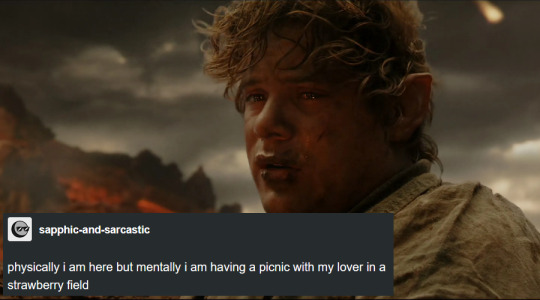



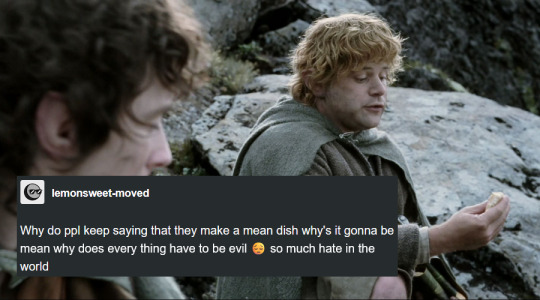

Sam Gamgee + text posts
(1 2 3 4 5 6)
4K notes
·
View notes
Text
I realized I didn’t say anything, but like Jackie, I am taking requests! I’ll do any pairing Hobbit and LOTR.
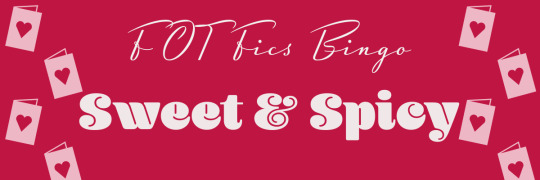
Hello, Fellowship! The time has come for bingo! You get a choice between some Sweet prompts or something a little more Spicy ;) Or, you can mix and match between the two boards!
You can play this a couple of different ways:
Try to go for a bingo within the month of February on either or both boards.
Or get your followers to send you asks featuring squares on the card!
Please be sure to use the tag #fotfics and submit your posts to be guaranteed to be put into the queue!
Boards are under the cut! Have fun and happy writing!

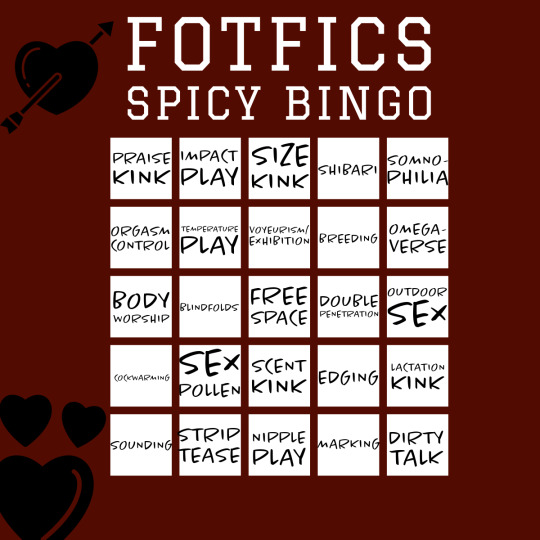
55 notes
·
View notes
Text

Hello, Fellowship! The time has come for bingo! You get a choice between some Sweet prompts or something a little more Spicy ;) Or, you can mix and match between the two boards!
You can play this a couple of different ways:
Try to go for a bingo within the month of February on either or both boards.
Or get your followers to send you asks featuring squares on the card!
Please be sure to use the tag #fotfics and submit your posts to be guaranteed to be put into the queue!
Boards are under the cut! Have fun and happy writing!


55 notes
·
View notes
Text
78K notes
·
View notes
Text

Welcome to Fellowship of the Fics!
Our goal is to share the various fanfics within the Tolkien fandom, as well as help authors with their struggles, if we can. Whether you write ships or gen, OC inserts, strictly canons, etc, it doesn't matter, we want to share your stories!
We have...
Monthly writing events!
The Hobbit: An Unexpected Collaboration event!
A queue designated to share your stories!
We share writing resources (and funny memes)
A discord server (all Tolkien fans are welcome!) to discuss Tolkien's work, and provide support for writers/artists with their creations!
Be sure to submit your fanfics to -> this form, or tag your fics with #fotfics, so we can share your stories!
Check out our masterpost with more info!
If there are any questions, comments or concerns regarding anything above, as well as the blog itself, please feel free to send us an ask, or you can DM one of the mods! @lordoftherazzles @ahufflepuffhobbit @fantasyinallforms
55 notes
·
View notes
Text
woah dude….. your hurt sound is vaguely sexual….. im trying to kill you but im. im getting a bit flustered
269K notes
·
View notes
Text
Israeli-Palestinian Conflict Historical Bibliography: Introduction and Methodology
I compiled this list because I am genuinely disturbed by all the bad history going around social media in light of the recent events in Gaza, and I want to help interested parties to understand the thousands of years of history which led us to where we are today. That is my only interest in compiling this list. I do have my own personal views on the conflict, but I am a responsible enough historian and MLIS that I know how to separate those views from my presentation of the secondary literature. The only bias you are likely to find here is in my categorization, as it inevitably reflects my fields of study.
In compiling this list, my process and methodology were as follows: I first wrote down all the relevant works I could think of off the top of my head, all hailing from my fields of Biblical Studies and Modern Jewish History. I then reached out to my friends in Modern Middle Eastern History, Conflict Studies, Jewish History, etc for recommendations, lists, and insight; one of my friends, an ABD PhD candidate in Modern Middle Eastern History, was particularly helpful in helping me understand Israeli historiography, and pointing me towards the best works in the field of Arab Nationalism.
After taking their recommendations, I conducted a series of google searches using “‘relevant search term’ site:.edu” to ensure that I received results from only academic domains. From there, I read syllabi for university courses, and examined comprehensive exam reading lists. After that, I searched the catalog of the New York Public Library using any and all relevant search terms, and I also conducted targeted searches on Amazon. By the time I finished, I had a 50 pages filled with book titles.
My next step was to divide the list into nineteen categories, deleting irrelevant titles and repeats as I went along. After dividing the books into categories, I put each title through a rigorous fact checking process, so to speak. I checked the publication material for each book to ensure that it was either a. published by an academic press with a built in peer review process, and/or b. written by an academic historian—either a faculty member, or someone with an MA or PhD in history. If I was still unsure after that step, I searched the title in the University of Maryland’s database system, and read the academic (meaning, peer reviewed) book reviews of the title. From there I either kept it on the list or removed it. As I approached the late-Ottoman period, I became extra-critical of relevant titles. At this point, I made sure to read book reviews from at least two academic journals in different fields/subfields to ensure not only the text’s legitimacy, but its ability to hold firm against the scrutiny of scholars in multiple fields. I tended to remove a work if the word “polemic” appeared in the reviews.
This said, many of the works on this list, particularly, but not exclusively, in the Post-1948, Arab Nationalism and the Modern Middle East, General Overviews, and Historiography Narratives, Memory and Theory categories will be slanted, or biased. Considering the topic at hand, this reality is both inevitable and perhaps necessary. I do advise you, however, to read any books you select from these categories critically.
The vast majority of these books are academic histories (simply put, I don’t trust popular historians with this topic), so if you are not accustomed to that type of writing, be sure to read the Introduction of whichever books you select very carefully, and understand that you are reading to learn—not necessarily to enjoy.
In terms of my categorization…it is imperfect and becomes admittedly fuzzy once we get into the late Ottoman Period. I’m not even 100% comfortable with some of these categories, but alas, if there is one thing I learned from Library Science it is that categories are both terrible and inevitable in the organization of information.
The categories are as follows:
Bronze Age Collapse-Babylonian Exile
Babylonian Exile-Roman Period
Byzantine Empire
Rise of Islam and Caliphate Rule
Crusades
Medieval European Jewish History
Sephardic Jewish History
Ottoman Empire
Early Modern and Modern European Jewish History
World War I, French Involvement, and the British Mandate in Palestine
Holocaust History
History of Zionism
Post-1948
Middle Eastern and North African Jewish History
Arab Nationalism and the Modern Middle East
Historiography, Narratives, Memory, and Theory
America Does Stuff Too
Books Which Span Multiple Categories
Other
I will post the list in daily, manageable chunks until we hit the end. Once posted in its entirety, this list will be permanently linked on my home page. I will continue to add to it as I inevitably come across a neglected source or twelve and fill in some gaps. If you think I missed an important text and want me to add it, please apply my methodology to it before sending it on to me. For readers seeing this on a reblog, following me until the list is done is the best way to ensure that you won’t miss an installment.
I hope that from this list you will gain an appreciation for the long and enormously complex history of this region of the world, and I hope you gain an appreciation for the vast arrays of experiences, ethnicities, and histories tied up in this tiny, contested piece of land. Hopefully this appreciation will lead to a broad, complete understanding of the issues at stake today, and will help you to inject accurate historical understandings into dialogue when you come across it.
If you choose to reblog, please reblog as text (link leads to visual guide of how to do so). Thank you!
frequently asked questions
ask historicity-was-already-taken a question
1K notes
·
View notes
Text
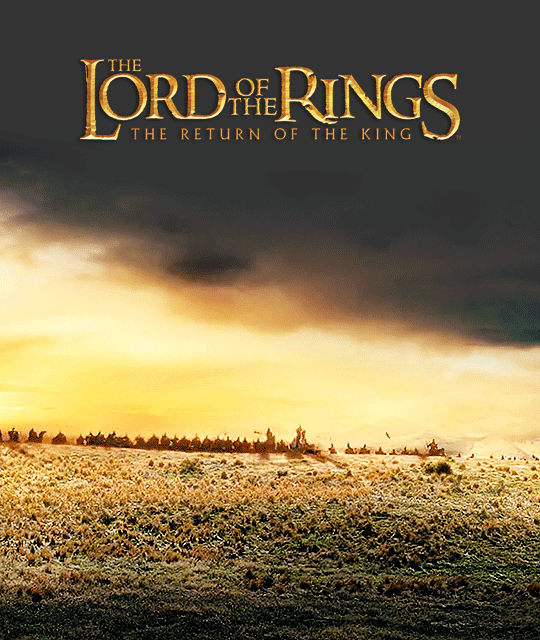


20 YEARS OF THE RETURN OF THE KING (17 DEC 2003)
3K notes
·
View notes





